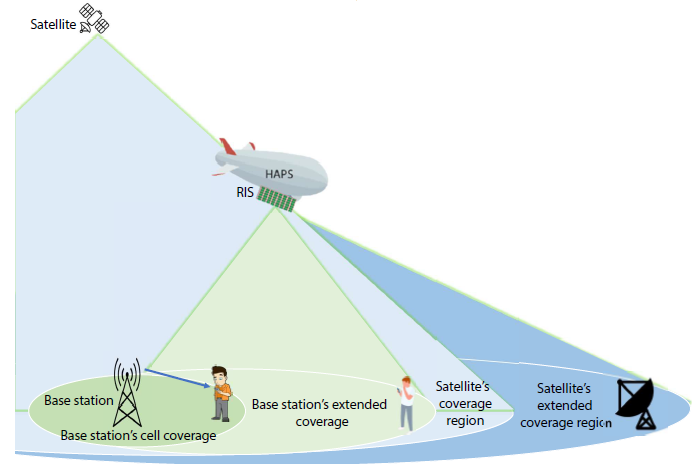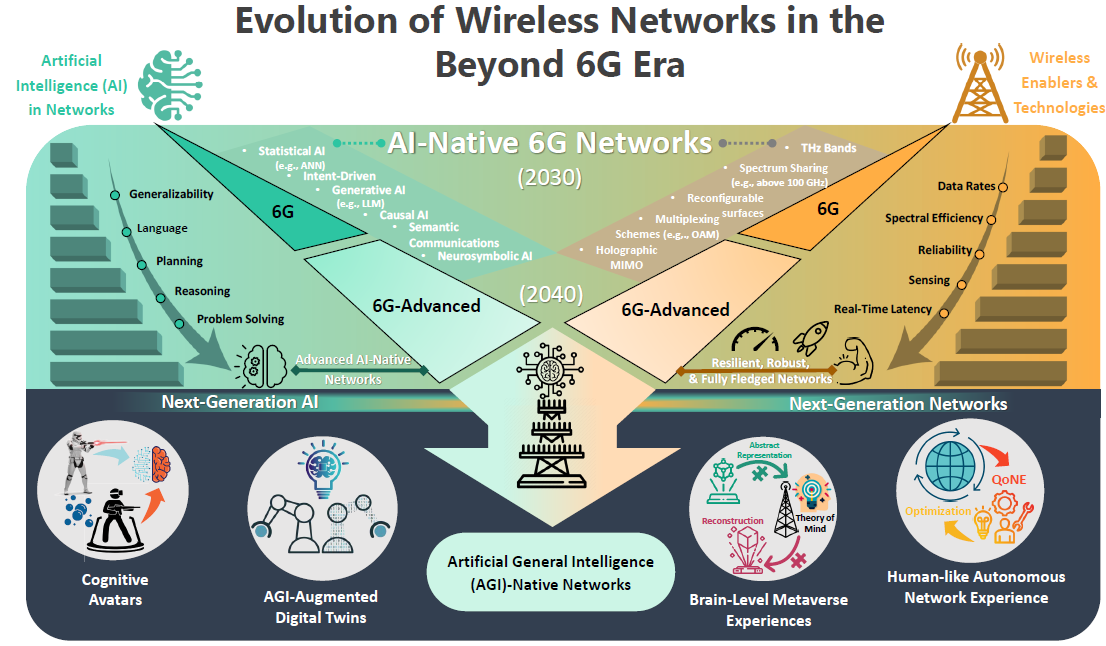Latest News and Publications for 6G Networks
Date: September 29, 2024: High Altitude Platform Station (HAPS), the Future of 6G Networks with Stratospheric Connectivity
In a major development for wireless communication, the High Altitude Platform Station (HAPS), positioned in the stratosphere at altitudes ranging from 20 to 50 kilometers, is emerging as a game-changer for future connectivity.
HAPS technology has been attracting considerable attention in recent years, thanks to its vast coverage area, direct line-of-sight communication links, and fixed position relative to the Earth. Unlike traditional terrestrial base stations, HAPS offers a much larger footprint, reaching areas that were previously difficult to connect. Its unique position closer to the ground than satellites enables it to provide reliable, high-quality coverage to users over a wide expanse.
What sets HAPS apart is its ability to operate alongside existing networks. In addition to supporting smaller networks like small-cells and macro-cells, HAPS introduces a concept known as a "mega-cell," significantly expanding the potential reach of wireless communication. This makes it an ideal candidate for complementing existing networks, particularly as we move toward the rollout of 6G and beyond.
Experts in the field are exploring various potential use cases for HAPS in [1]. As research and development continue, HAPS is poised to play a crucial role in shaping the future of wireless communication, offering a glimpse into a world where even the most remote corners of the globe can stay connected.
 Image from [1]
Image from [1]
[1]. Abbasi O, Yadav A, Yanikomeroglu H, Dao ND, Senarath G, Zhu P. HAPS for 6G networks: Potential use cases, open challenges, and possible solutions. IEEE Wireless Communications. 2024 Jan 31.
Date: August 20, 2024: Key publications from the literature for 6G networks
- Jiang, Wei, et al. "The road towards 6G: A comprehensive survey." IEEE Open Journal of the Communications Society 2 (2021): 334-366.
- Uusitalo, Mikko A., et al. "6G vision, value, use cases and technologies from European 6G flagship project Hexa-X." IEEE Access 9 (2021): 160004-160020.
- Matinmikko-Blue, M., et al. "White paper on 6G drivers and the UN SDGs. 6G Research Visions 2." University of Oulu, Finland (2020).




